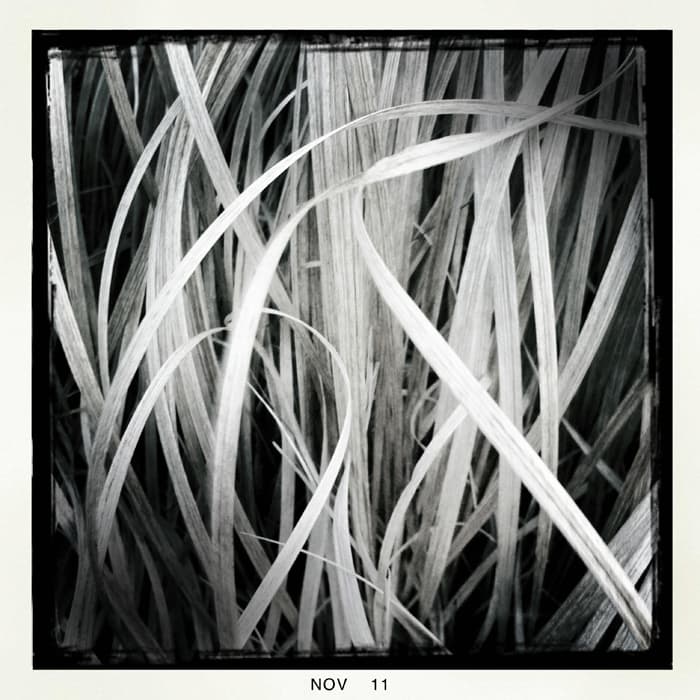Photo Insight with David Ward

David Ward is one of the UK’s finest landscape photographers. With more than 20 years’ experience in large-format photography, he has photographed extensively throughout the UK and in countries such as Canada, Iceland, Norway and France. He has also led workshops for Light & Land. David has written two books on his photographic philosophy called Landscape Within and Landscape Beyond. Each month, he will discuss the story behind one of his fantastic landscape photographs
This image is a little different from the photographs I have had published in the past in Photo Insight, and the primary reason for this is that it’s shot using my iPhone. It was taken using the Hipstamatic app, although that’s not a function I tend to use any more.
I started using my iPhone as a way to produce more experimental pictures, as I felt it necessary to briefly move way from the inherent ritual you engage in when working with a 5×4 camera. I also wanted to introduce a freedom and quickness to the image-making process.
I started playing around with phone cameras and apps around October 2011. It struck me as interesting that we all carry a camera around with us these days, whether it’s on our phones or a little compact digital camera, and I wanted to see how that could fit into my own world of photography.
While the freedom and unpredictability of the practice was important, I think you can tell by looking at the image that I’ve been very careful when considering the framing and composition. Yet even with those careful considerations there’s a level of freedom that would have been denied me had I used my 5×4. It would have been near impossible to shoot with a 5×4 camera because depth of field would have been a huge issue. With an iPhone, you have enormous depth of field because it’s such a small sensor – the focal length is very short. Looking at the whole subject area, it’s around 6in-9in across, which is very small. With a 5×4 camera it would have been very difficult getting all that sharp.
I mentioned the ritual of shooting on 5×4, and what I mean by this is that when you work with that kind of camera there are a series of steps you must engage in to produce an image that’s usable. This slows you down. In a way that’s a good thing, because it makes you look at your subject so you can’t make a quick snap. This can help you see connections you might otherwise have missed. However, one of the things you may miss out on is the more ephemeral moments that present themselves to you. Some events, such as a patch of light or a subject moving quickly, are fleeting and you can miss them while setting up your 5×4.

There is also an expectation that goes with a format and with a camera. I’ve often seen this with my workshop participants when they have bought a big expensive piece of kit. They have a great camera and they want to do that camera justice. This means there’s an expectation of the kind of image that has to be produced. For them, it has to be worthwhile with no sense of play. Yet for me, playing is a big part of photography – in fact, in any kind of art. It’s only through experimentation that you find your way forward in your chosen field.
These were the things I had to weigh up when I decided to play around with iPhoneography. I wanted to produce something light-hearted and interesting. I saw something beautiful, captured it and then quickly moved on. I also wanted to experiment with things such as aspect ratio. I haven’t shot in square format since college, so I could experiment with how I wanted to arrange things in a square.
There are also all sorts of ‘cultural references’ with this type of photography, because you’re taking part in what some people call the ‘point and hope’ style that is often associated with using a Lomo or Holga camera. I used the fake filter effect that makes the image appear as if it were shot on Polaroid or expired film stock, and this leads people to view the image in a certain way.
One of the reasons that I stopped using Hipstamatic and switched to an app called Tadaa is that with Tadaa you can actually choose the filter you apply to your image after the shot has been taken. With Hipstamatic, you have to choose the filter before you take the image and then you’re stuck with it. Applying a filter afterwards allows you to choose a style that is sympathetic to your subject. This particular lens and filter combination are perfect for the grassy subject, and the vignetting and tonal contrast work well together.
There’s a nice balance in this shot between description and abstract. Most photography, including mine, is descriptive. One of the ways that a photographer can introduce a little more interest in their images is to push them a little more towards the abstract as it introduces mystery. I think there’s a lot going on with the folds and leaves in this photograph that makes you want to dive into it.
David Ward was talking to Oliver Atwell
To see more of David’s images or to book a place on one of his workshops, visit www.into-the-light.com







